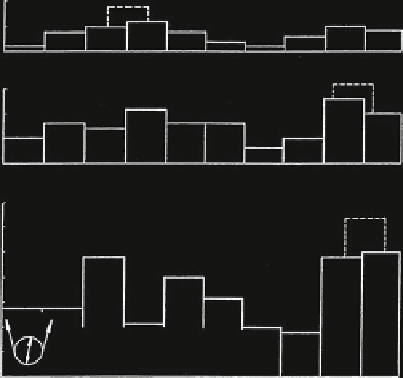Civil Engineering Reference
In-Depth Information
Fig. 3.72 Reference lengths
L on the bending length l
LLL
Fig. 3.73 Number of wire
breaks in the reference
lengths L
N=32000
N
′
=58,3%
10
5
0
N=40000
N
′
=72,8%
15
10
5
0
N
′
=87,4%
N=50000
35
30
35
20
15
10
30kN
D
Warrington 8x19
NFC, d = 16mm
D/d = 16, r = 0.53 d, steel hardened
before test lubricated viscous mineral oil
−
5
0
0
6
12
18
24
30
36
42
48
54
60
bending length I/d
The whole bending length l of the rope is divided into sections with the ref-
erence length L as shown in Fig.
3.72
. If, for example, a wire rope was stressed by
bending cycles in the same way over its complete length, this does not mean that
course there would be the same number of wire breaks in every section of the rope.
This is to be seen in Fig.
3.73
where the observed numbers of wire breaks are
shown in 2 9 5 sections. The whole bending length is l = 60 d and the section
length is L = 6d. The first line shows the number of wire breaks B
L
after the
number of bending cycles N = 32,000, the second after 40,000 and the third after
50,000. Thus the relative life of the rope is N
0
= 58.3 % and so on.
The maximum number of wire breaks B
L,max
normally does not occur in one of
the ten sections. The real maximum number of wire breaks is rather to be found in
a length L in between. This can be ascertained by moving a window with an
opening of the length L in steps Dl over the whole bending length and by counting
the wire breaks in the window at every step (window method). The result of this
counting is shown in Fig.
3.73
by broken lines, one for the left five sections and
one for the right.
The number of steps is
z ¼
l
L
Dl
þ
1
:
ð
3
:
80
Þ



Search WWH ::

Custom Search